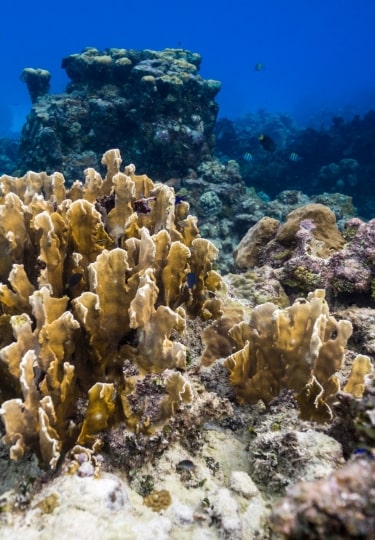From close encounters with stingray or turtles off Grand Cayman, to diving a shipwreck off Aruba, there is no shortage of Caribbean coral reefs to explore. You can find dives for complete beginners, and caves or swim-throughs that will delight the most experienced diver.
One thing is a constant, however. You’ll find warm water, great visibility, and that warm Caribbean welcome wherever you go.
Mesoamerican Reef, Belize
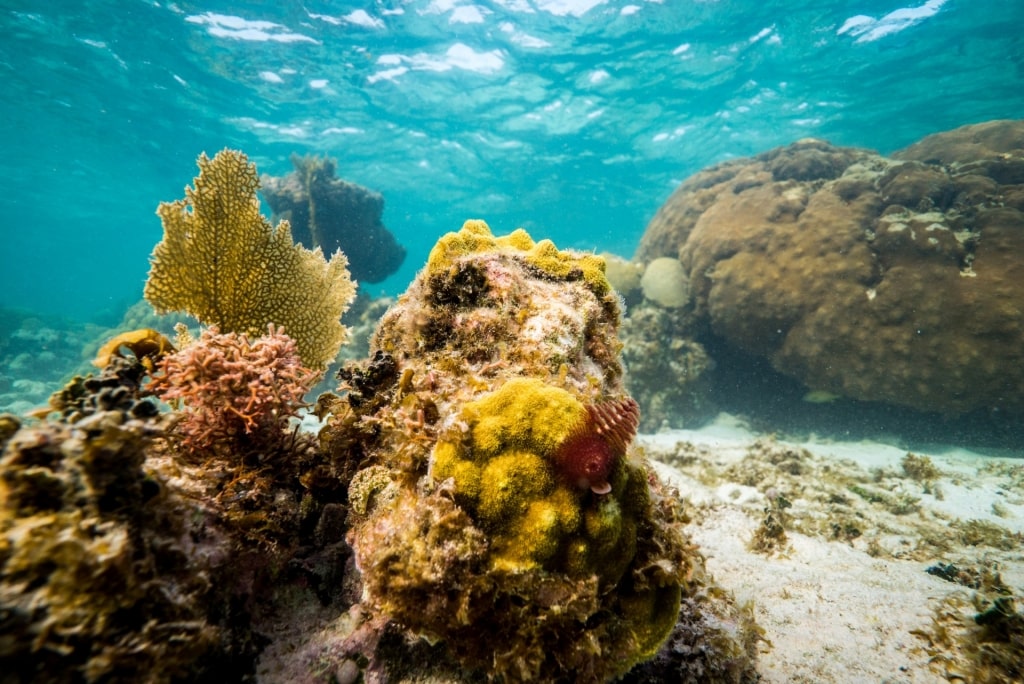
Mesoamerican Reef, Belize
The longest coral reef in the Northern Hemisphere is made up of hundreds of sand and mangrove cays. With 500 species of fish, and more than 60 of coral, it’s one of the best diving spots in the world.
Given its 120-mile length, there are dive sites here for every level of experience. Beginners can enjoy the shallow Long Caye Ridge, while experts will seek the challenge of the Great Blue Hole.
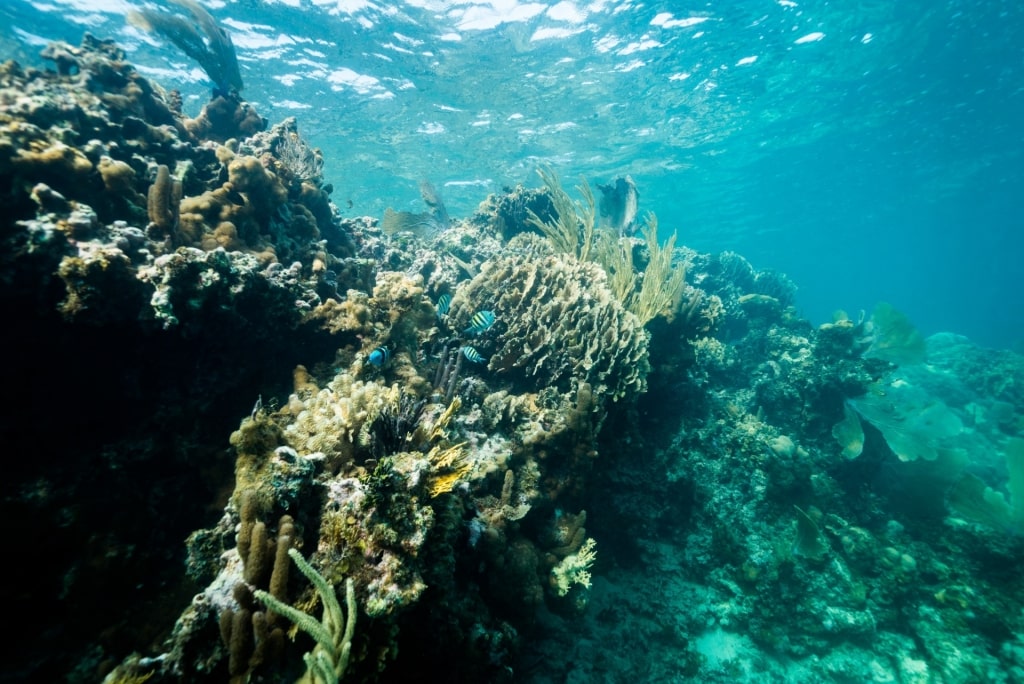
Mesoamerican Reef, Belize
Wall dives include the 50-foot descent at The Aquarium, and the long Eagle Ray Wall—named for the many eagle rays swimming near it. The Witconcrete wreck, a sunken World War II era sailing ship, is another major attraction.
You will also find plenty of places to enjoy the reef while snorkeling in Belize. You can expect to see sharks, stingrays, manatees, and green turtles.
Klein Bonaire Reef, Bonaire
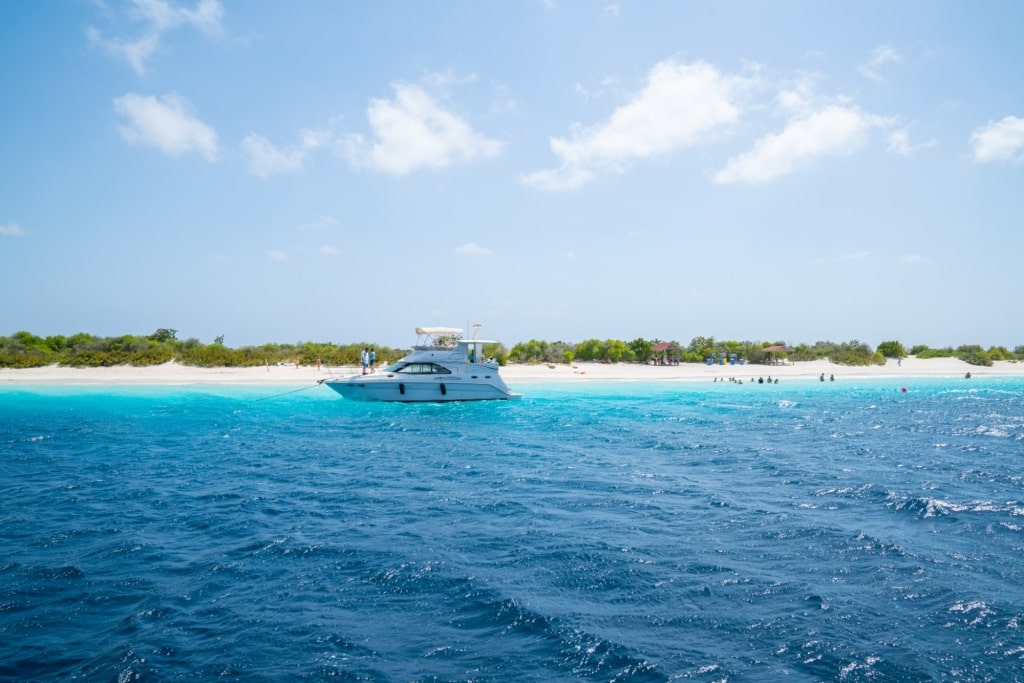
Klein Bonaire
Klein Bonaire, about a half-mile from Bonaire itself, is encircled by its own coral reef. With the tiny island being uninhabited, this is one of the most pristine reefs in the Caribbean.
Now a protected marine park, the reef throngs with fish and healthy coral, making it one of the best places to go diving in Bonaire. You can dive off the shore, or enjoy wall dives that drop to 100 feet.
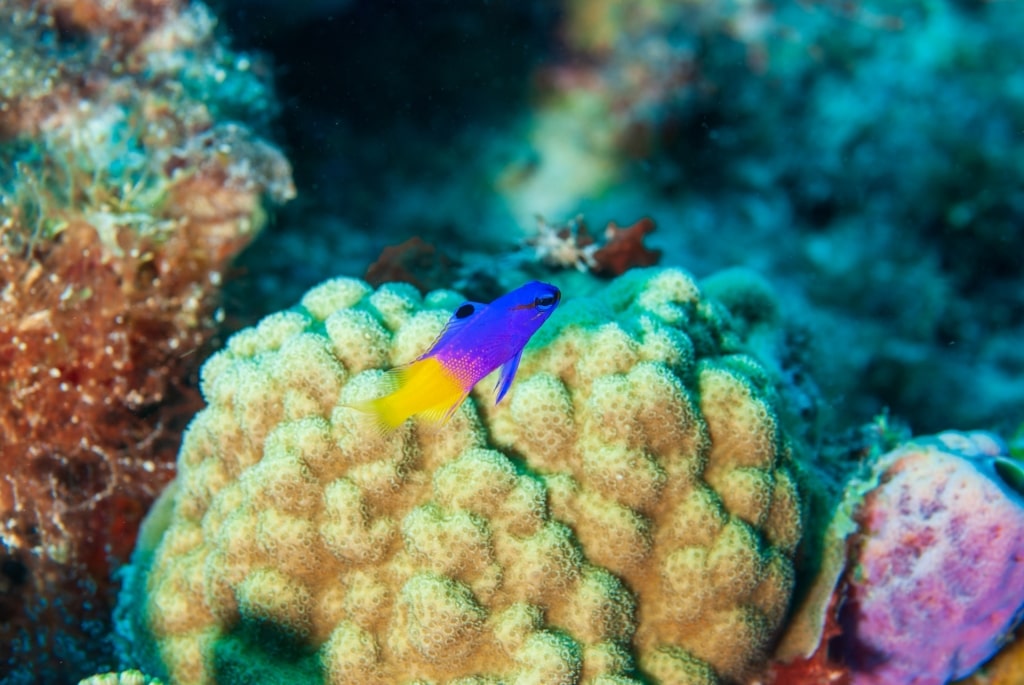
Klein Bonaire Reef, Bonaire
Diving is one of the best things to do in Bonaire, and a favorite site with divers of all abilities is Sampler on the north of the island.
There’s a clean sandy bottom, and you can expect to see everything from octopus and lobster, to colorful sponges, and angelfish accustomed to being fed by divers.
Sea sponges are a particular delight in the warm, biodiverse waters of Klein Bonaire. With visibility averaging 50 feet, even snorkelers will have plenty to see.
Read: Best Places to Go Diving in Bonaire
Malmok Reef, Aruba
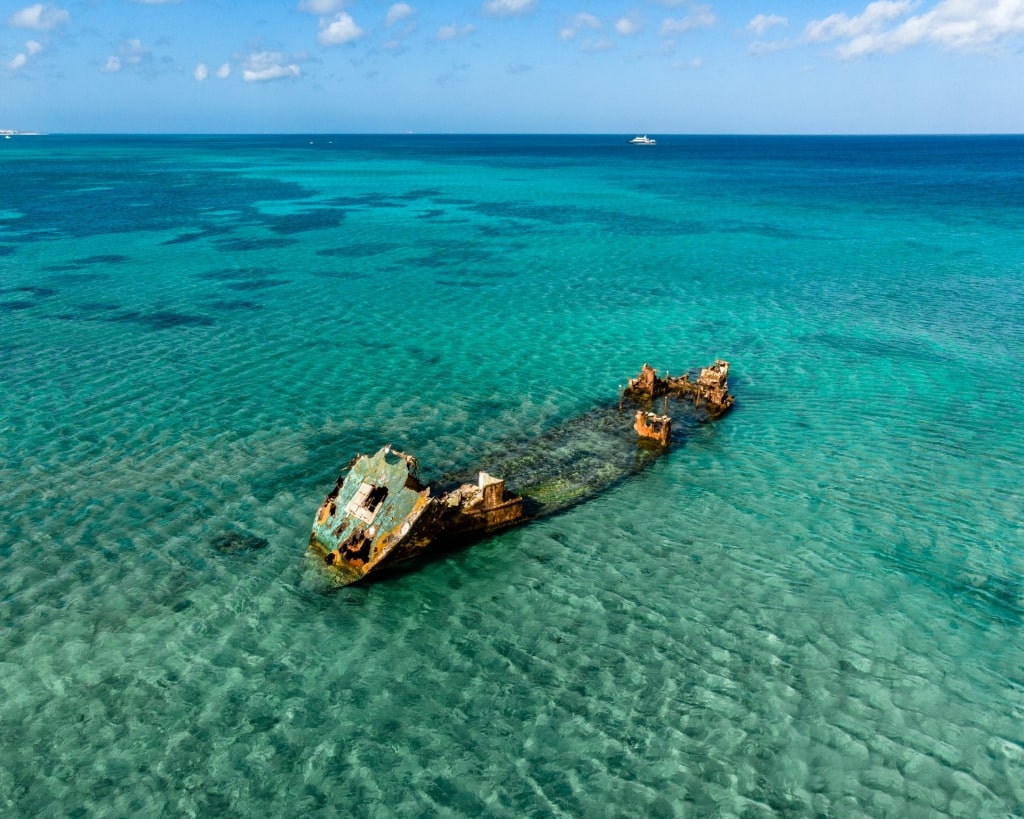
Malmok Reef, Aruba
Malmok Beach is near the northwestern tip of Aruba, en route to the famed California Lighthouse in Hudishibana. The narrow beach’s calm waters are popular for swimming and snorkeling in Aruba.
Malmok Reef is a good, sheltered dive site for beginners, and its three shipwrecks include the novice-friendly Baboo. Shallow, warm water gives good visibility, making the reef a prime spot for underwater photography.
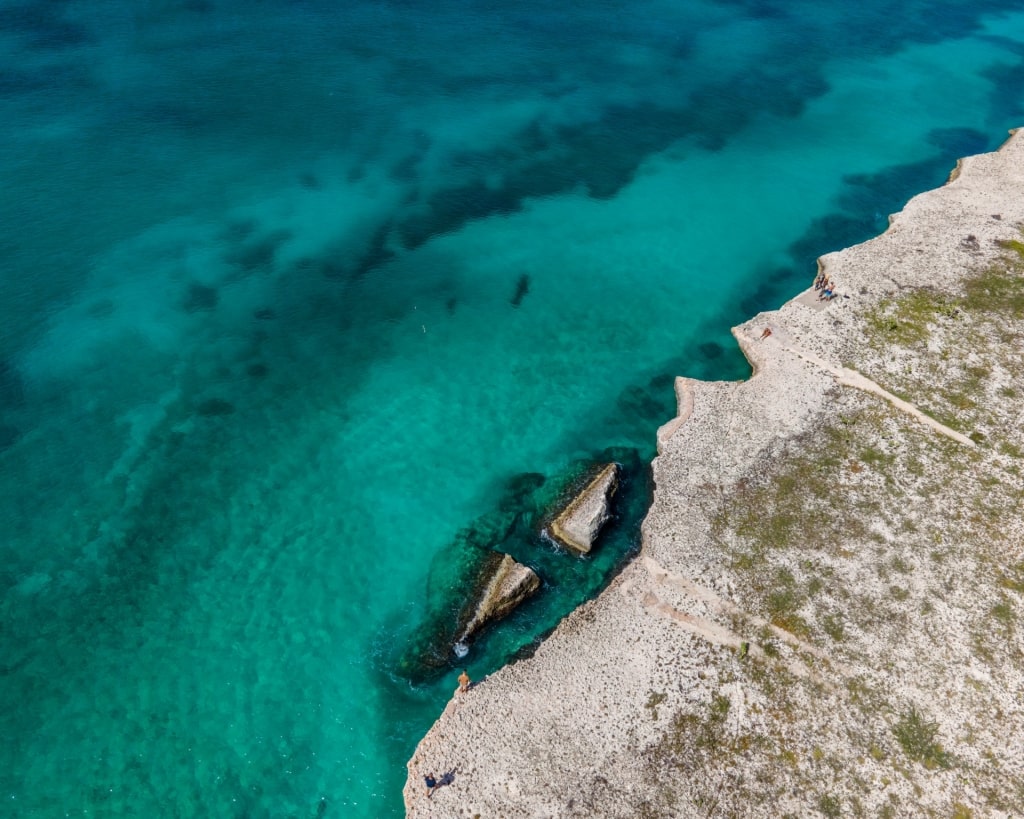
Malmok Reef, Aruba
Entry is off the rocks alongside the beach, so beach shoes are essential. There are often catamarans or sailboats anchored offshore, so a surface safety buoy is important, too.
You can expect to see huge lobsters, stingrays, sea urchins, and turtles, as well as giant barrel sponges. There is a small chute in the coral to dive through, if you are confident enough in your buoyancy control.
Arashi Reef, Aruba
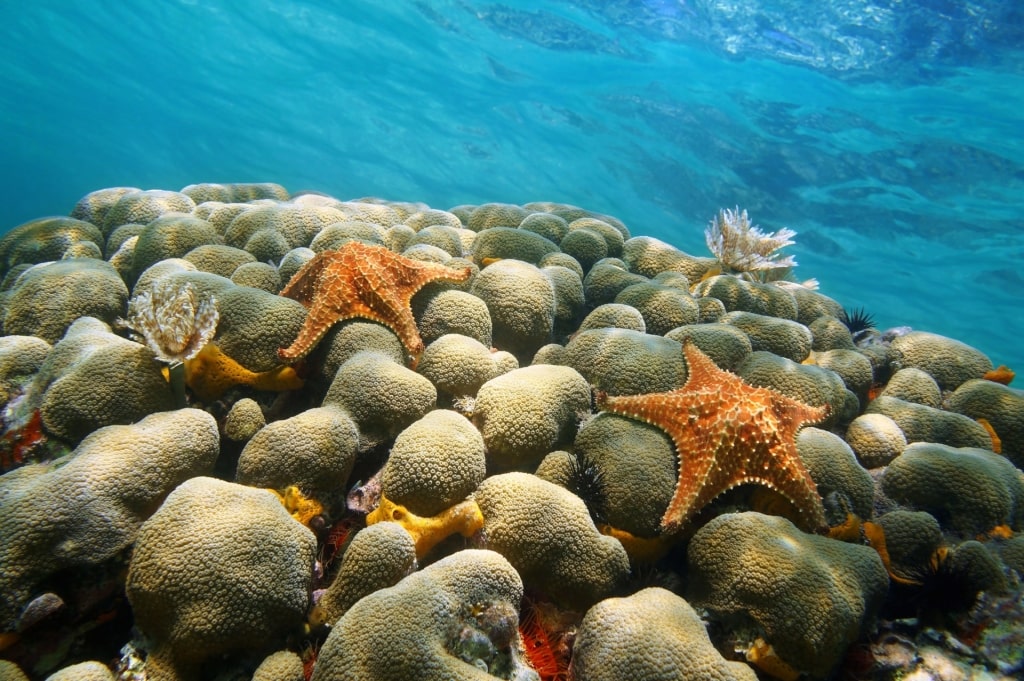
Arashi Reef, Aruba
Just north of Malmok, Arashi is a similar reef that is equally good for beginners. Plenty of brain coral, angel fish, and Hawksbill turtles are highlights.
The Blue Flag certified beach itself attracts swimmers and snorkelers as much as it does divers. One of the best beaches in Aruba, the white sand is also a popular local spot to just hang out, listen to live music, and enjoy the beach bar.
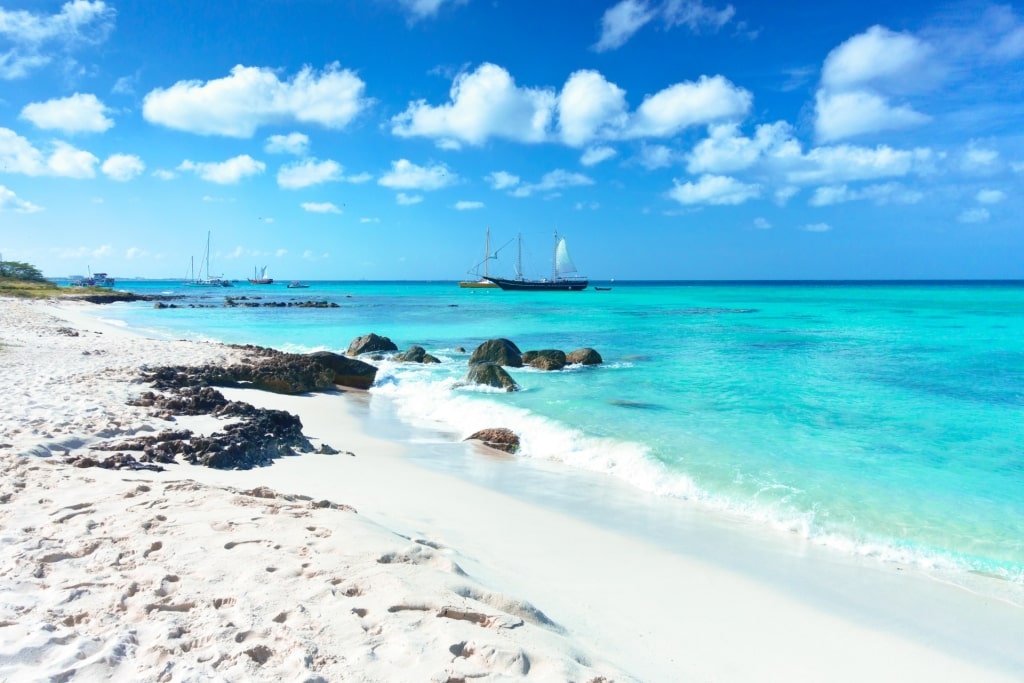
Arashi Beach, Aruba
Scuba diving in Aruba is equally relaxing, with a drift dive being the best way to protect the coral from accidental damage. However, it’s a 15-minute swim out to the reef from the shore, if you don’t come by boat.
Reef depths range from about 30 feet nearer to the shore, and up to 45 feet further out. One unusual feature is the rusting wreckage of a 1930s Lockheed Lodestar aircraft.
Palancar Reef, Cozumel
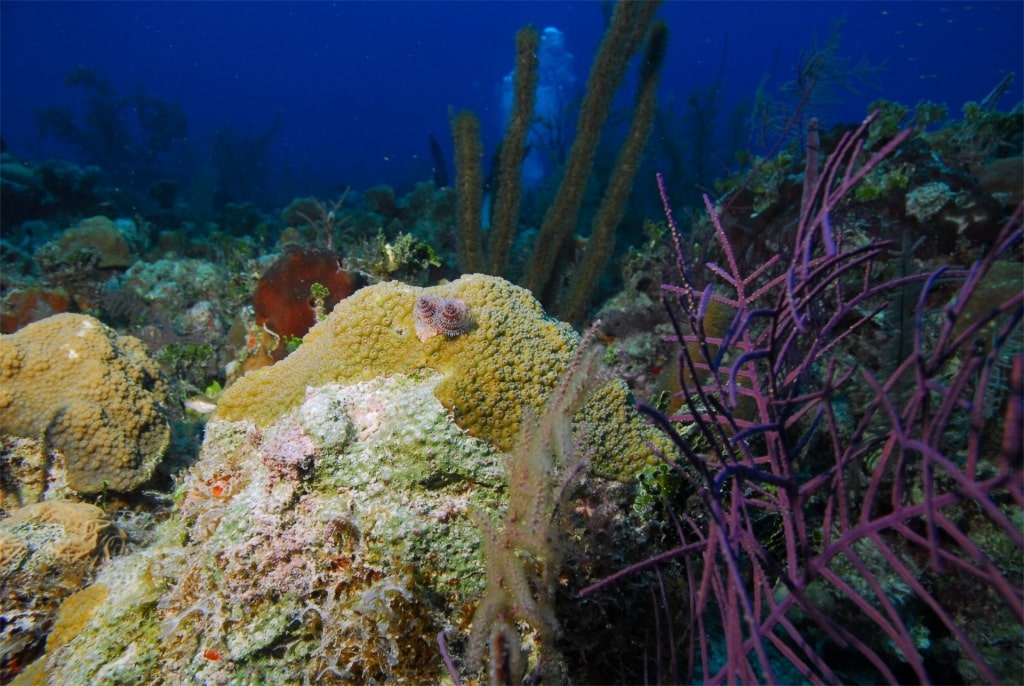
Palancar Reef, Cozumel
Palancar is Cozumel’s most famous dive site for a reason. Running for just over three miles, the reef has enough distinctive sites to give you a different experience every day for weeks.
Depths run to a maximum of 110 feet, with the reef itself starting at a depth of 20 feet or so. Despite the crystal clear waters, with up to 200-feet visibility, that depth makes the reef mostly unsuitable for snorkeling in Cozumel.
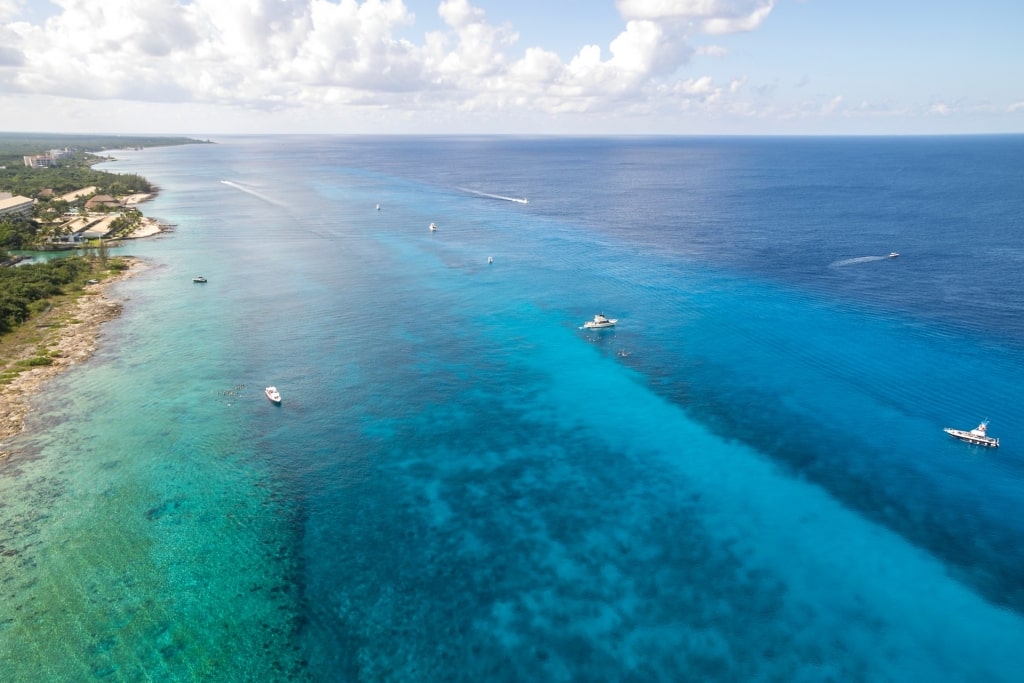
Palancar Reef, Cozumel
Scuba pioneer Jacques Cousteau put Cozumel on the map in the 1960s. He called it “one of the best places around the world for diving, thanks to its fantastic visibility and its wonderful marine life”.
Little has changed since, apart from the large increase in the numbers of people who are now able to dive. Fortunately, Palancar is more than big enough to cope, offering everything from cave dives to forests of sponges.
Arrecifes de Cozumel National Park, Cozumel
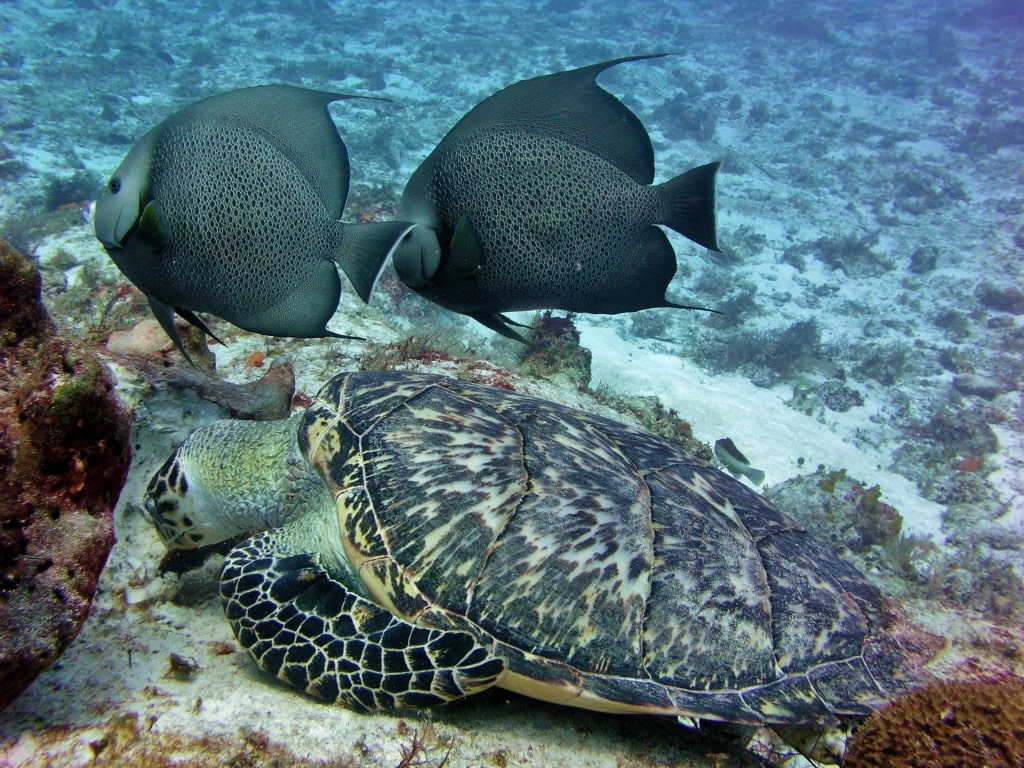
Arrecifes de Cozumel National Park, Cozumel
This national park protects the reefs along the southern coast of Cozumel island. As well as 60 species of coral, there are at least 500 fish species of fish, and 350 other marine species.
This diversity includes such rarities as pink conch, queen triggerfish, and loggerhead turtles. You can also expect to see shoals of reef fish, and several shark species.
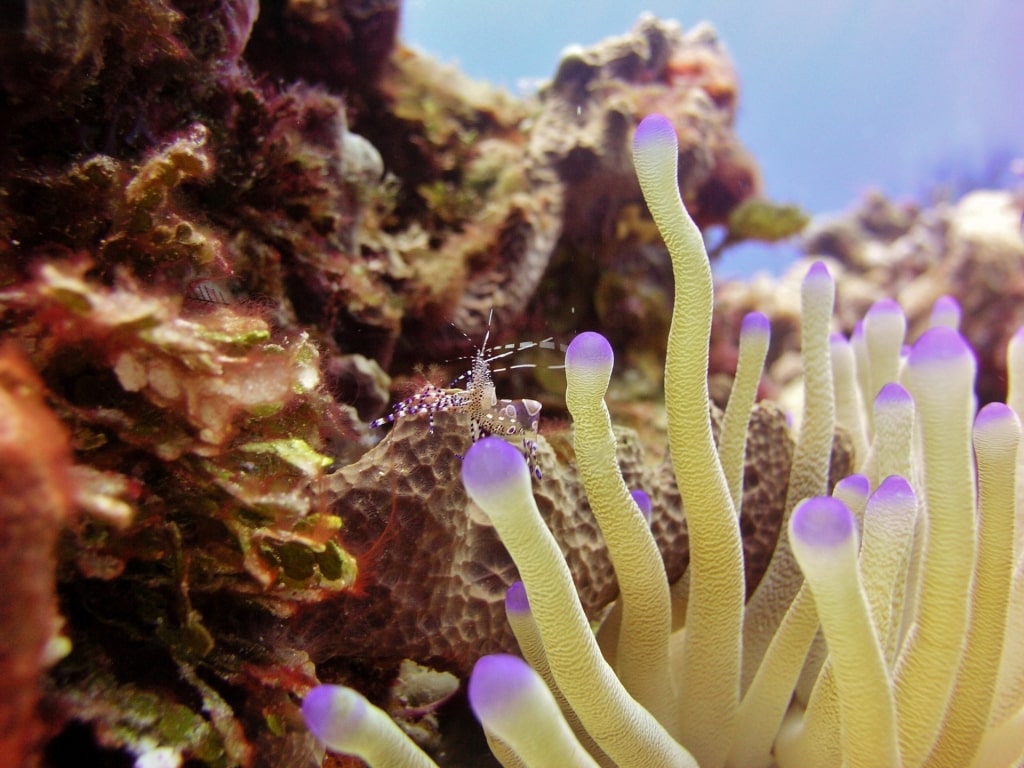
Arrecifes de Cozumel National Park, Cozumel
One of the best coral reefs in the Caribbean is easy to experience on a drift dive, but there are also swim-through caves, and walls. Perfect visibility is the norm, reaching up to 150 feet, and the water is warm.
Help protect this pristine site by using reef-safe sunblock, and being aware of not touching the coral.
Read: Best Things to Do in Cozumel
Champagne Reef, Dominica
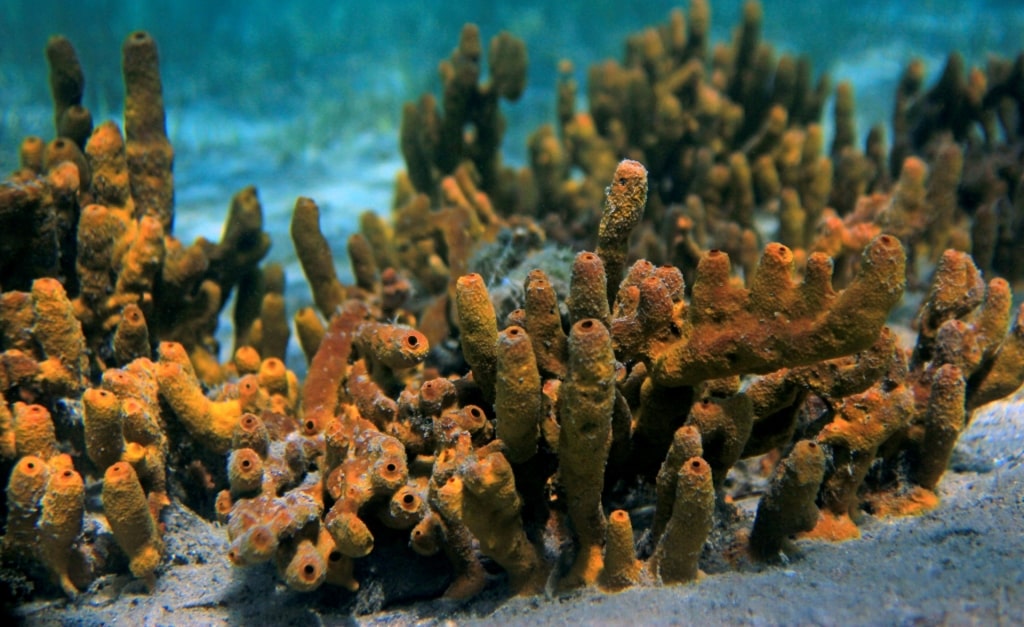
Champagne Reef, Dominica
Champagne Reef is named for the bubbles in the water, escaping from ocean floor volcanic springs. It can be disorientating—your first thought might be that your air tank is leaking—but the bubbling, heated water is a real thrill.
Visiting here is one of the best things to do in Dominica, and you’ll find yourself swimming through geothermal up-flows of hot water, and touching heated sand. No surprise that this geothermal water supports a rich variety of unusual species.
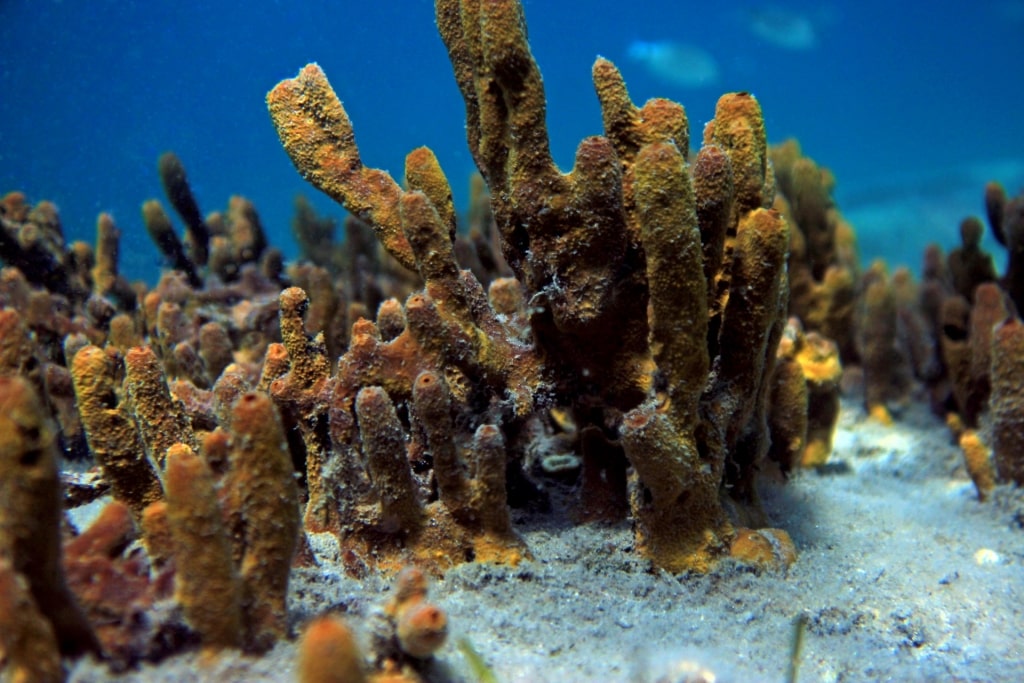
Champagne Reef, Dominica
Sponges come in colors that span the rainbow from yellow to purple. There are water lilies, parrotfish, seahorses, octopus, and much more.
The reef itself is an equal sensory overload for divers or snorkelers in Dominica. There are spikes, cliffs, and massive gold-colored rocks.
From the dive center on the waterfront, you can walk right into the water. The entry is rocky, so you’ll need water shoes to protect your feet.
Buck Island Reef, USVI
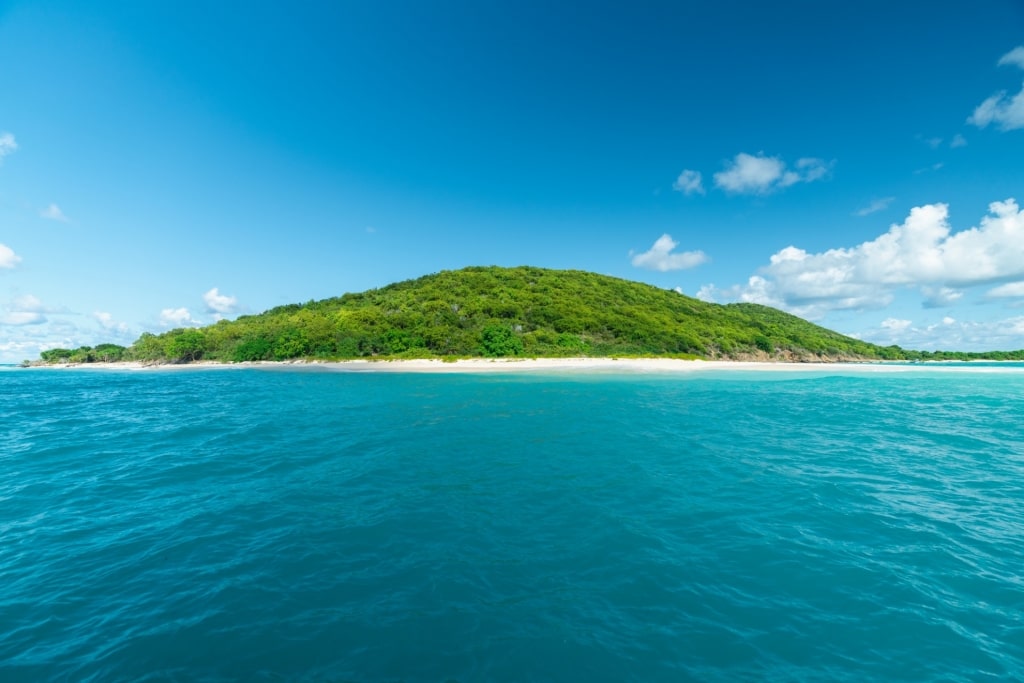
Buck Island, USVI
Buck Island is one and a half miles off St. Croix in the U.S. Virgin Islands, and can only be visited on guided tours. The tiny island, and a very much larger area of its surrounding waters are protected in the Buck Island Reef National Monument.
The reef is perhaps best known for an underwater trail laid out by the U.S. National Park Service on the eastern side. Plaques on the seafloor guide snorkelers on a scenic, informative route through the corals.
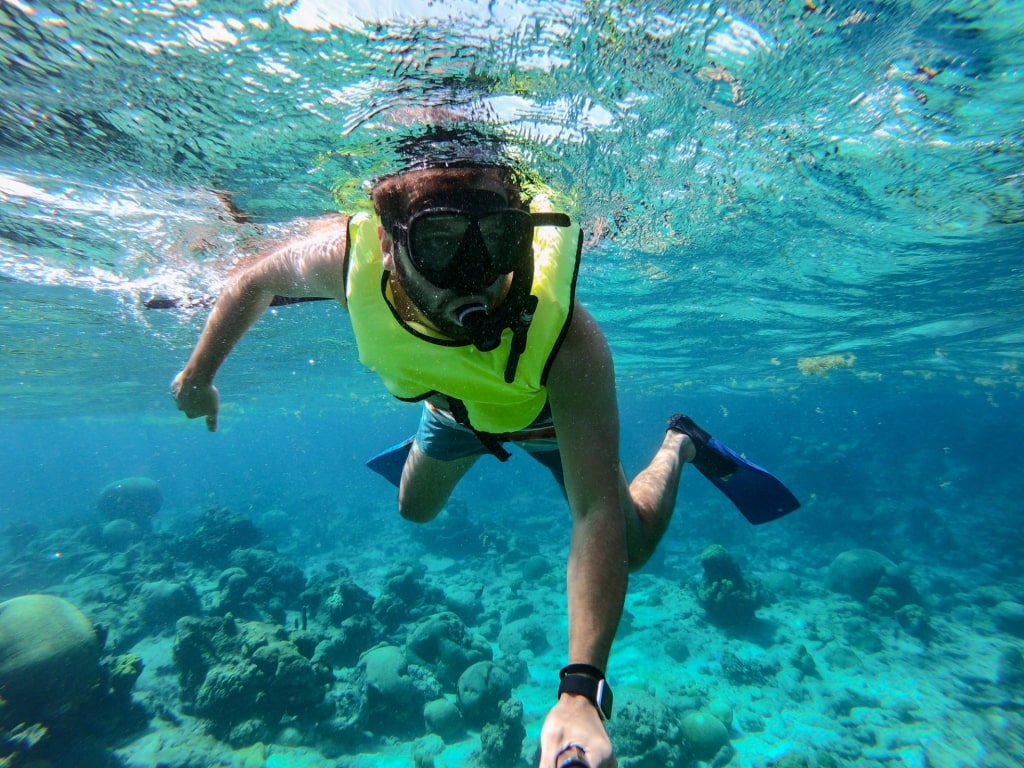
Buck Island Reef, USVI
For divers, the highlight lies to the west of the island in Buck Island Point. At depths from 45 feet to 80 feet, you’ll find plenty of sea life, and lots of pretty elkhorn coral.
On this western side of the island, you’ll also find Turtle Beach. A nesting site for several species of turtle, it’s one of the best places to swim in the world.
Trunk Bay Underwater Trail, St. John, USVI
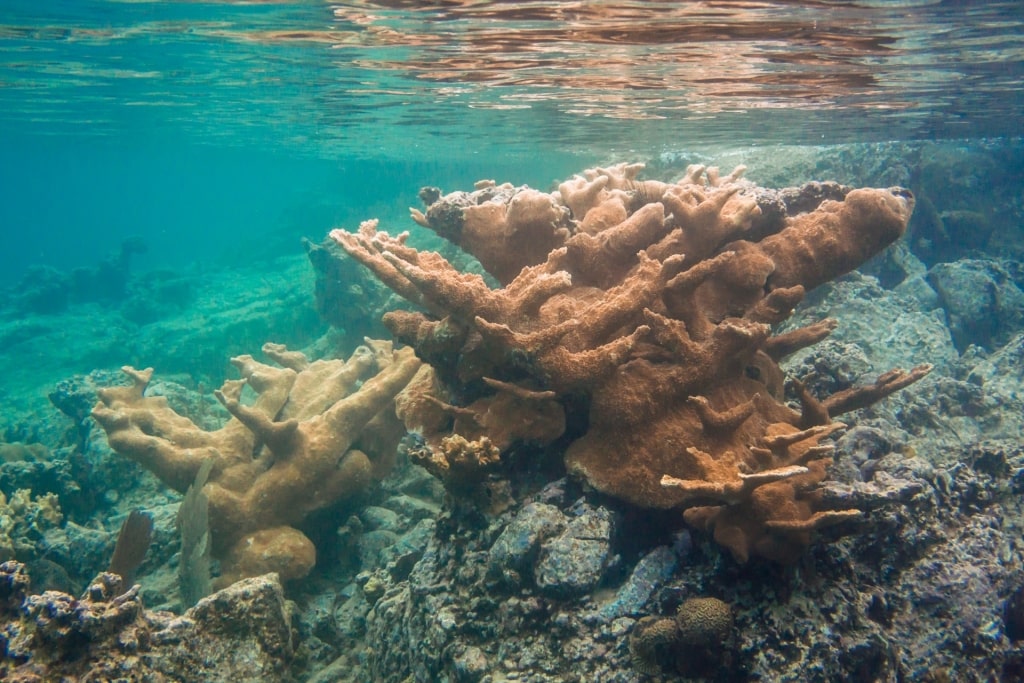
Trunk Bay Underwater Trail in St. John, USVI
Like Buck Island, St John’s Trunk Bay is another underwater snorkel trail laid out by the U.S. National Park Service. Plaques identify corals, fish and other sights you can see as you swim a 225-yard-long route marked by buoys.
The underwater trail was updated in late 2022, after the original signs had weathered severely.
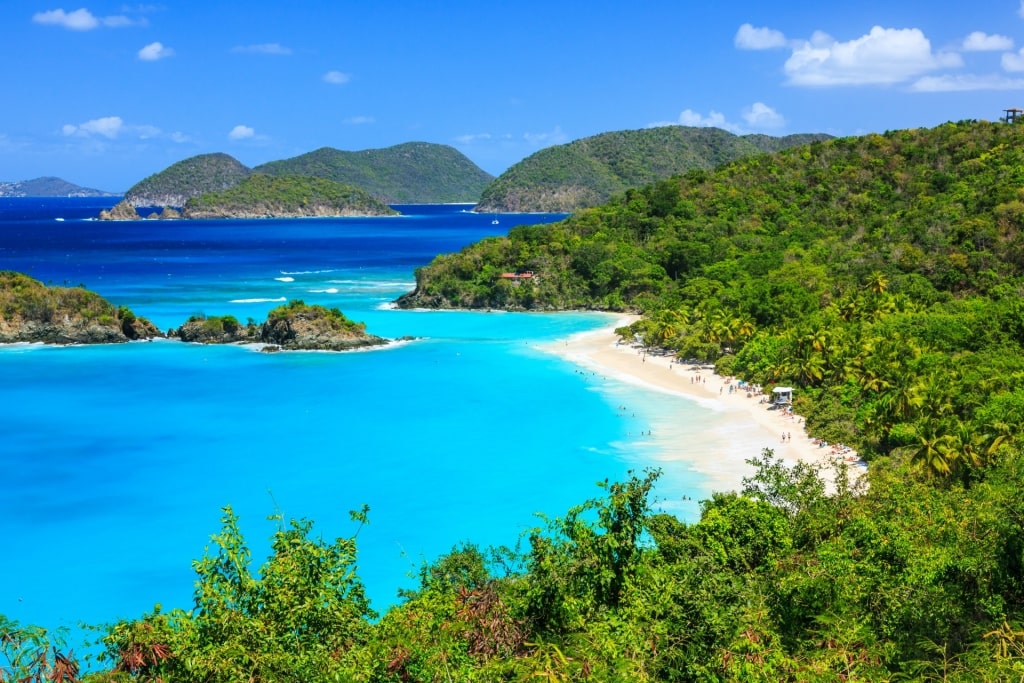
Trunk Bay in St. John, USVI
Trunk Bay itself is one of the best beaches in the U.S. Virgin islands, with a beautiful white sand beach, changing facilities, showers and equipment hire. There is a small snack shop, and lifeguards on duty.
The bay takes its name from a local word for turtle. A leatherback turtle on the surface supposedly looks like a floating steamer trunk.
Escambron Marine Park, Puerto Rico
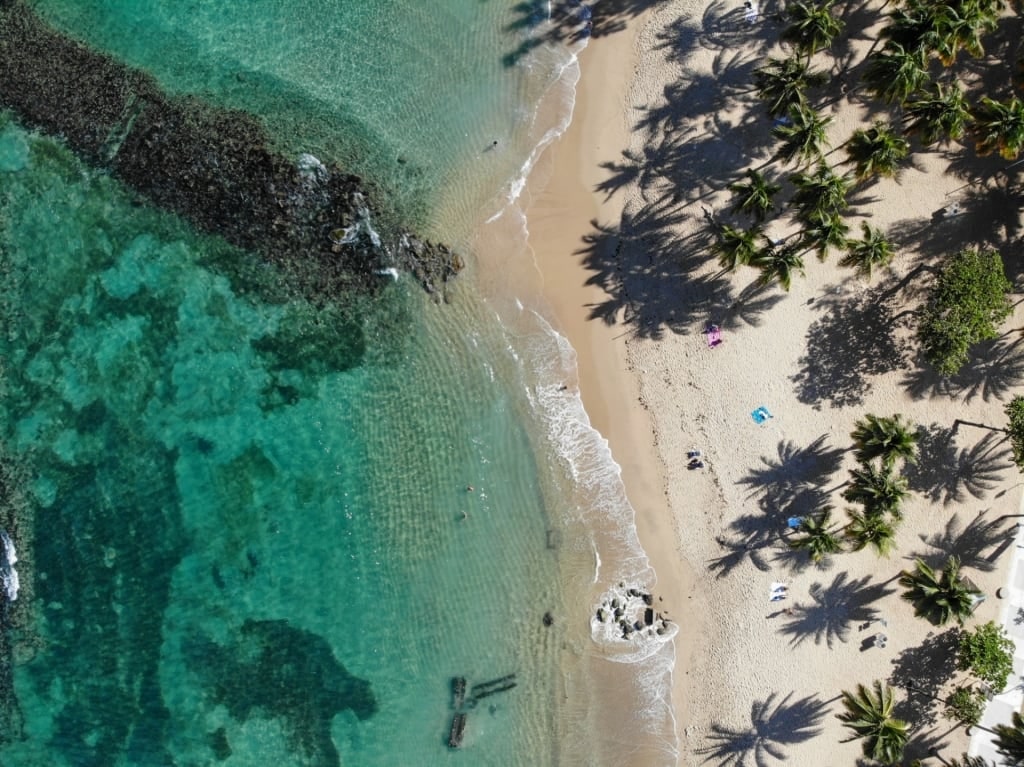
Escambron Marine Park, Puerto Rico
Escambron Marine Park is on the north shore of Puerto Rico, very near Old San Juan. The Scuba Dogs dive shop is literally on the edge of the park, and offers equipment hire and training, as well as guides. Visibility can be limited, but reaches 20 feet on good days.
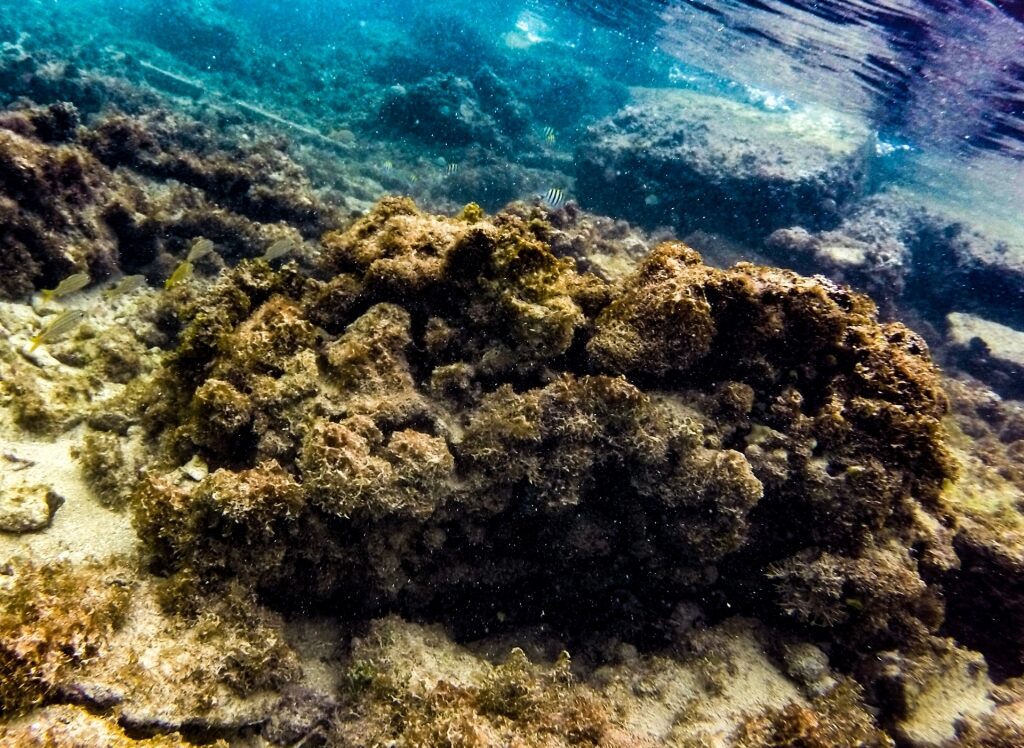
Escambron Marine Park, Puerto Rico
Average depth is 20 feet, and entry is from the sandy Pocita Beach. Stay in the bay to see turtles in the Seaweed Forest, or explore the swim-through tunnels and caves of Labyrinth Reef, just outside the bay.
You can also explore “Atlantis”, one of the best scuba diving spots in the Caribbean with fluted columns, statues, and other artificial underwater features. Nearby is the Taino Reefs, a series of concrete balls designed as an artificial reef to encourage fish.
Anse Chastanet, St. Lucia
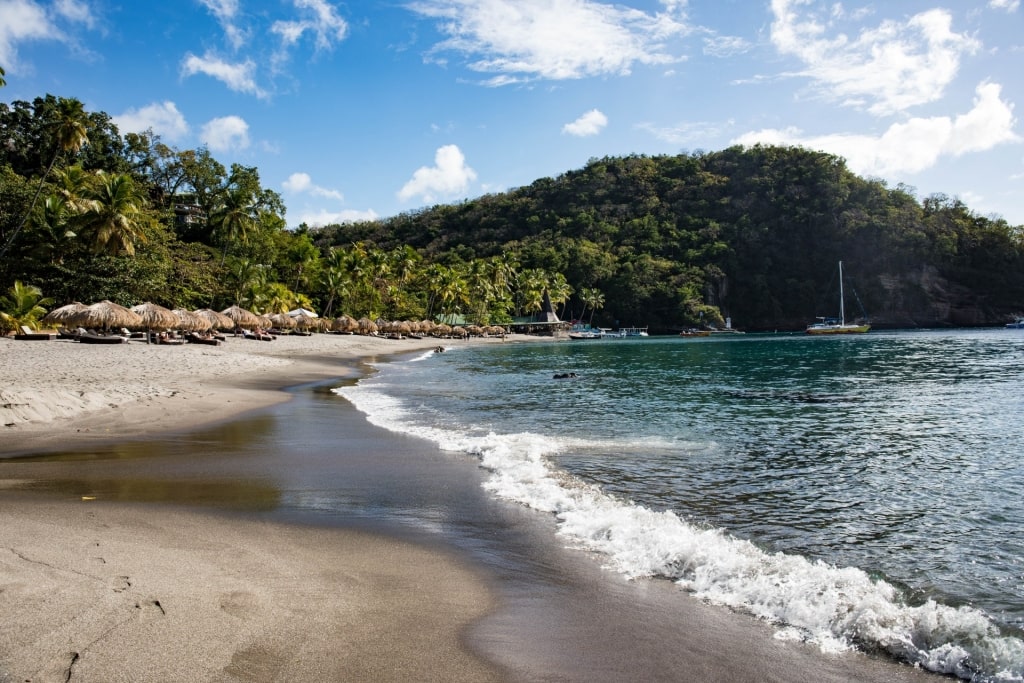
Anse Chastanet Beach, St. Lucia
St. Lucia is growing in popularity as more divers discover one of the best coral reefs in the Caribbean. Much of the shoreline—the east, and southwest in particular—is protected by offshore reefs.
One of St. Lucia’s best beaches, Anse Chastanet sits on that southwestern shore, and offers spectacular snorkeling in only five feet of calm water. Divers can go further, and deeper, to see even more species of coral, and 150 species of fish.
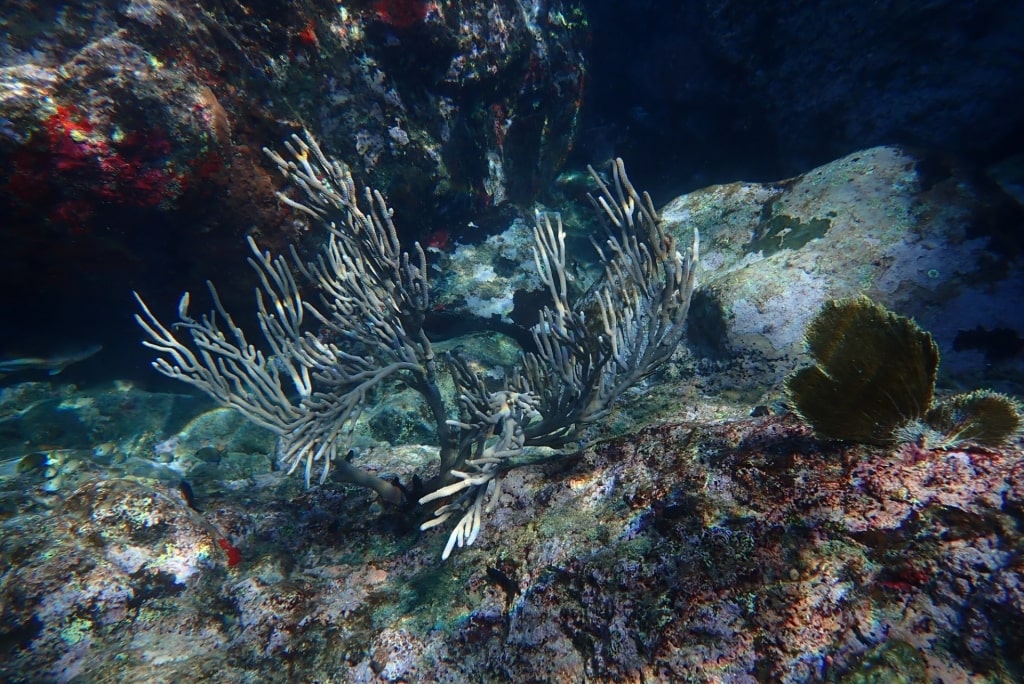
Anse Chastanet, St. Lucia
Most of the main reef sits at about 20 feet, before it drops off to 140 feet. It’s part of a major marine reserve in St. Lucia, so buoyancy skills are critical to make sure you don’t touch the coral.
Expect to see octopus, turtles, moray eels, and seahorses as well as shoals of reef fish. Macro photography is very popular here, given the clarity of the water.
Coral Gardens, Grand Cayman
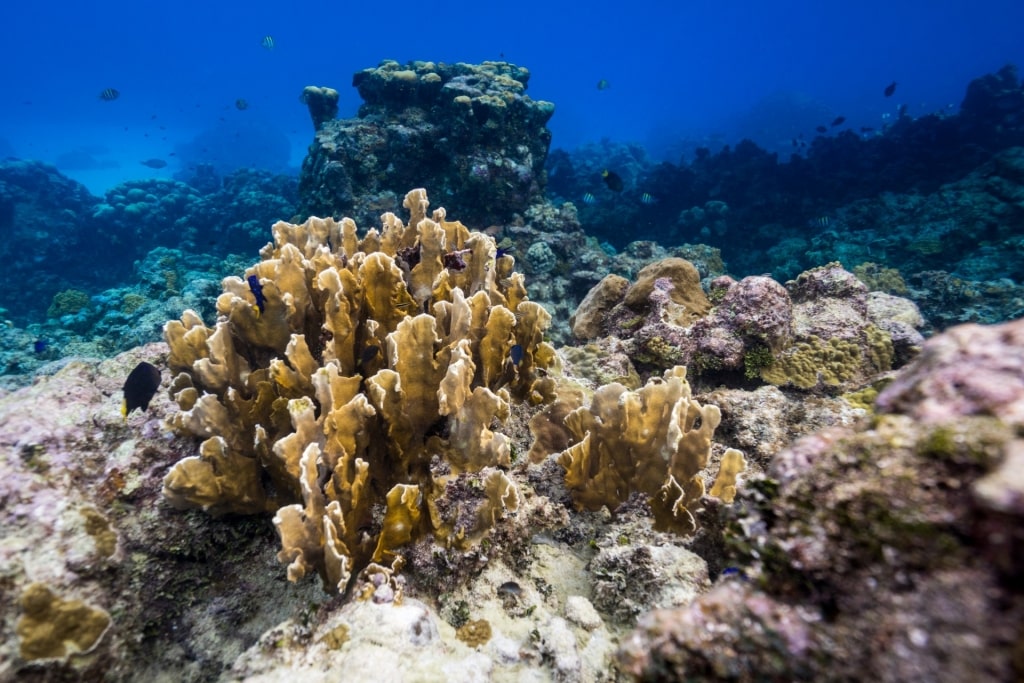
Coral Gardens, Grand Cayman
Coral Gardens lies inside the coral reef enclosing North Sound, a large bay in northwest Grand Cayman. North Sound is well known for also being home to Stingray City, where you can stand on a sandbar to see stingrays up close.
Much deeper, at around 15 feet, Coral Gardens is popular with snorkelers as well as novice divers. With lots of healthy coral, this area also supports plenty of fish, and even green turtles.
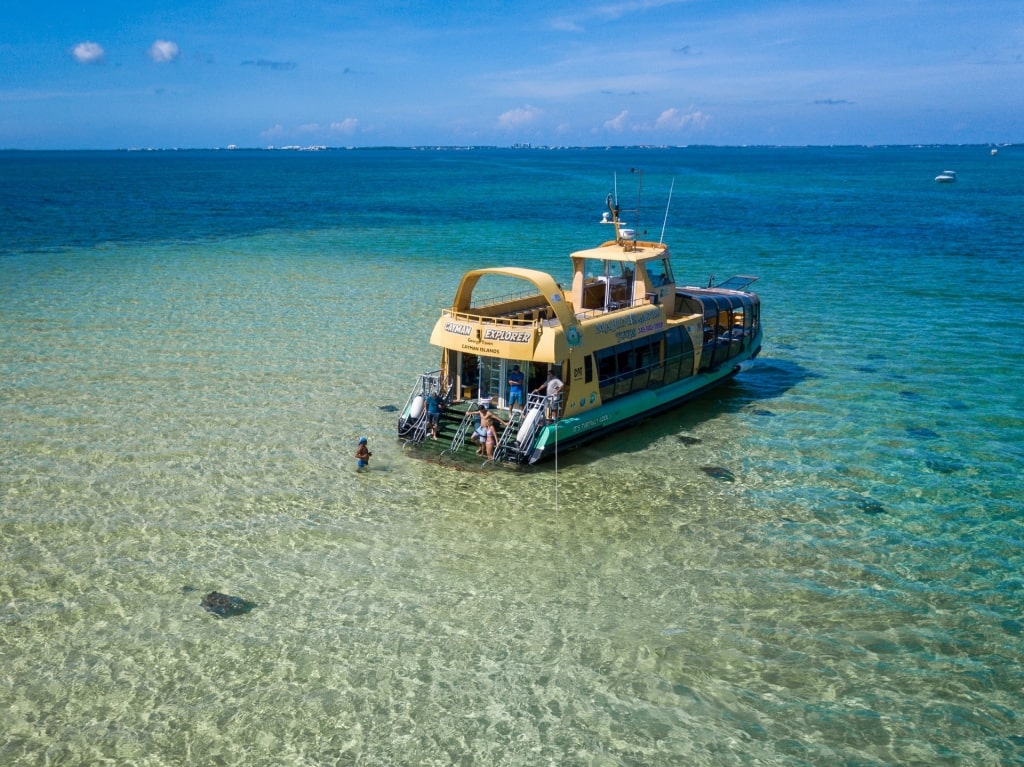
Stingray City, Grand Cayman
Being a mile or more from shore, depending on where you start, access is realistically only by boat. Most Stingray City tours will also take in Coral Gardens.
While snorkeling in Grand Cayman, you’ll hopefully see wrasse, triggerfish, parrot fish, and eagle rays among many other species. The many coral species are supported by an ecological initiative by local divers, who have set up coral nurseries.
Devil’s Reef, Jamaica
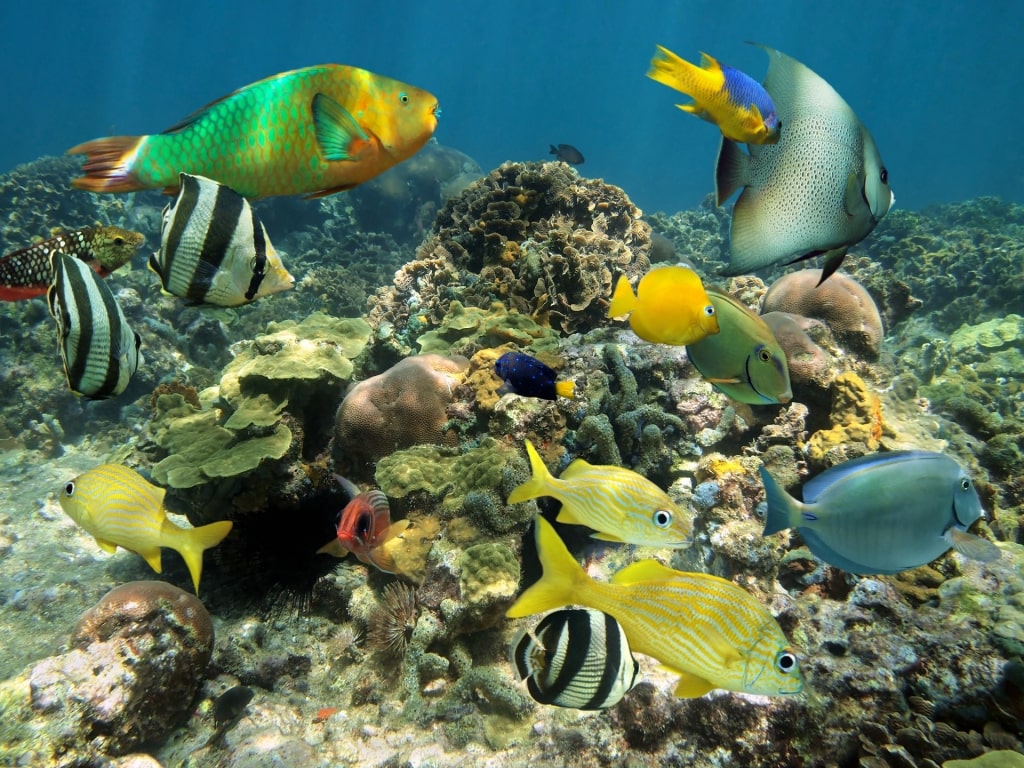
Devil’s Reef, Jamaica
Devil’s Reef, on the north shore of Jamaica near Ocho Rios, is much less intimidating than its name suggests. Although deeper parts reach 120 feet or beyond, it starts at 60 feet.
Novice divers and snorkelers, can stick to the shallower parts to see staghorn corals, black ball sponges, sea turtles, moray eels, snappers, groupers, and more. Experienced divers will want to explore the reef’s steep walls, slopes, and the rich marine life of deep crevices.
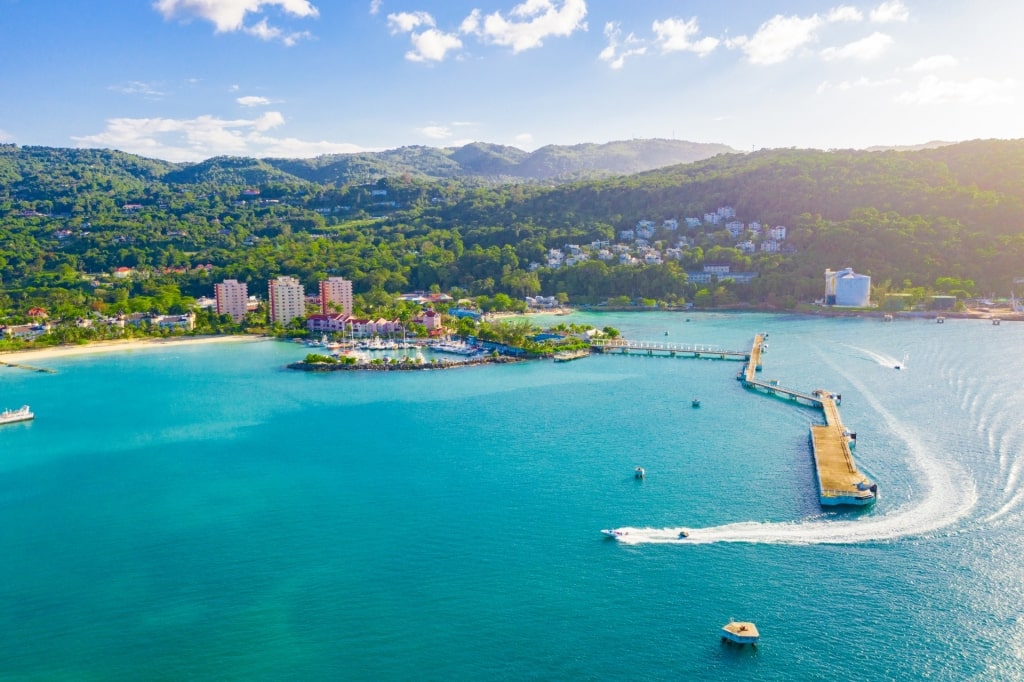
Ocho Rios, Jamaica
The reef can only be reached by a (short) boat ride from Ocho Rios, home to some of the best beaches in Jamaica. Water temperatures average 80ºF, and visibility is usually excellent.
Nurse sharks, barracuda, and scorpion fish are among the larger fish species on show. You can also see large numbers of sea fans, gorgonians (alcyonacea), and lettuce sea slugs.
Curaçao Underwater Marine Park

Curaçao Underwater Marine Park
The Curaçao Marine Park stretches for around 12 miles along the southeast coast of Curaçao. With water usually warm enough to dive in without a wetsuit, visibility is up to 150 feet under normal conditions.
Divers have a choice of 11 sites, most only 300 feet or so from the shore. All these factors make it one of the easiest and best Caribbean reefs to explore.

Curaçao Underwater Marine Park
As well as plenty of reef corals, and fish, there are several sunken wrecks to expect while snorkeling in Curaçao. The most popular is the wreck of the Superior Producer, at 100 feet, and the coral-covered tugboat off Tugboat Beach.
The tugboat is 150 feet offshore, and less than 20 feet under the surface. That makes it attractive for snorkelers, and novice divers, not to mention shoals of reef fish.
Read: Caribbean Beaches With the Clearest Water
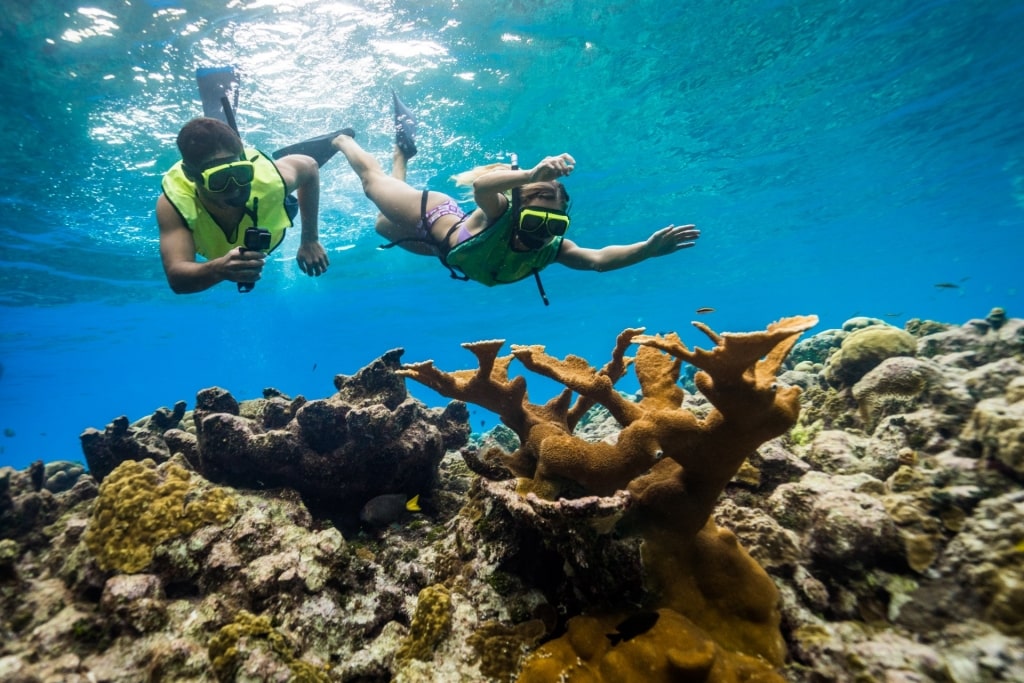
Grand Cayman
Has this guide to the best Caribbean coral reefs to explore given you the urge to dive into some warm water? Browse Celebrity’s Caribbean cruises to find the perfect vacation.
